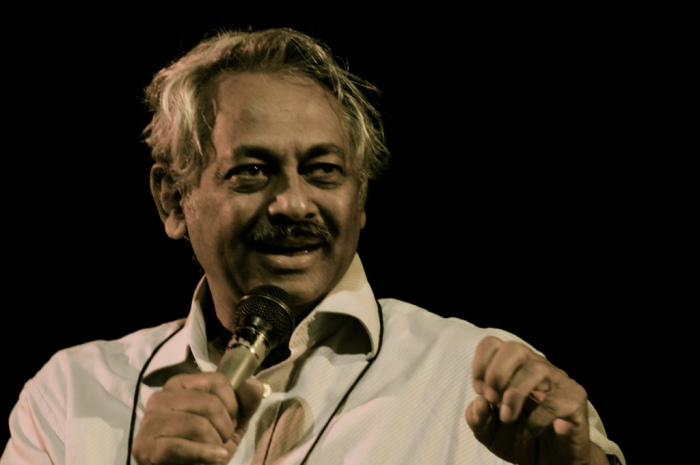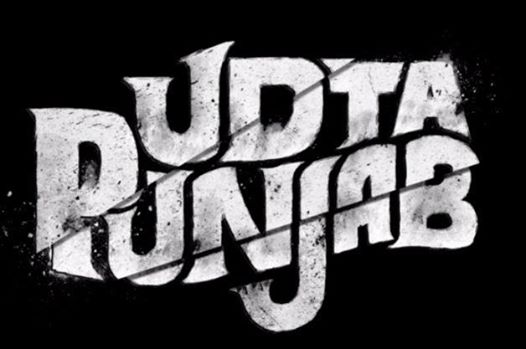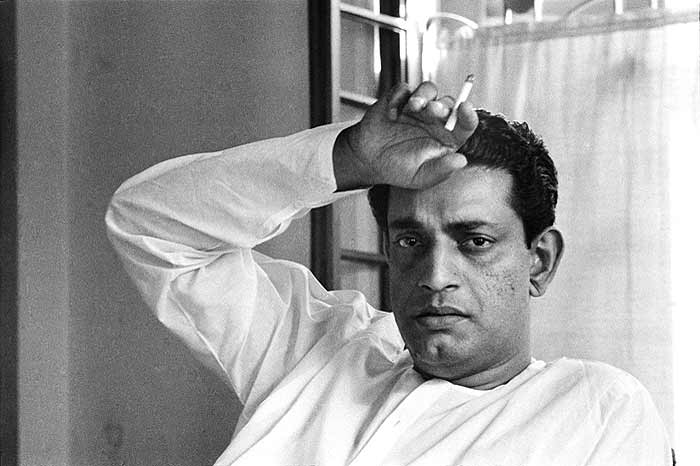A haunting sequence in the 2002 Kannada movie, Dweepa, among many other stunning cinematic moments in the movie, is the protagonist, Nagi, takes on the furious rain and a bloodthirsty tiger, which has been visualized as a mortal dual lasting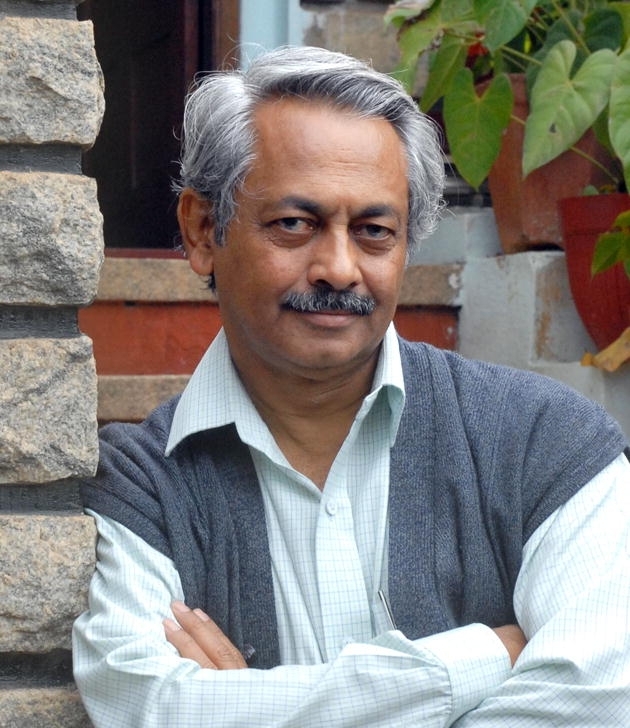 almost the length of night. The woman fights her survival battle all alone as her desperate husband gives up. Nagi forms numerous fire islands using twigs to scare away the tiger, which eventually makes the house an island of fire beneath the roaring downpour, and Nagi herself transforms to an island of survival in the process. There are very few films in the history of Indian cinema that could imbibe the essence of the whole movie into a single scene or sequence, and there are very rare filmmakers like Girish Kasaravalli, who could achieve such an ambitious cinematic idiom. Hailing from a remote village in Karnataka, Girish Kasaravalli is a finest auteur in the Indian parallel cinema with a number of path-breaking films to his credit.
almost the length of night. The woman fights her survival battle all alone as her desperate husband gives up. Nagi forms numerous fire islands using twigs to scare away the tiger, which eventually makes the house an island of fire beneath the roaring downpour, and Nagi herself transforms to an island of survival in the process. There are very few films in the history of Indian cinema that could imbibe the essence of the whole movie into a single scene or sequence, and there are very rare filmmakers like Girish Kasaravalli, who could achieve such an ambitious cinematic idiom. Hailing from a remote village in Karnataka, Girish Kasaravalli is a finest auteur in the Indian parallel cinema with a number of path-breaking films to his credit.
Born and brought up in the folk rich cultural scope of rural Karnataka, Girish Kasaravalli’s aesthetic foundations were laid by folklore, books, and nature. Kasaravalli was initiated to the magic lantern of cinema by the touring talkies that visited villages once in a while and his maternal uncle, KV Subbanna, a prominent figure in the Kannada Theater. Even though he emerged as a graduate in Pharmacy, Kasaravalli dropped his career in the science disciple and went after the charm of cinematic narratives and enrolled in Film and Television Institute of India (FTII), Pune. FTII opened up all new realms of film aesthetics and techniques for the science graduate in him and ignited the process of self-discovery. At the institute, Kasaravalli discovered and unlocked works of masters like Ozu, Bresson, and Ray, who made their indelible marks on the budding filmmaker. In a conversation in the “Life in Metaphors”, a brilliant documentary about Kasaravalli and his oeuvre directed by OP Srivastava, he remembers those budding days of realization and epiphany.
Govind Nihalani – Fury Of A Fist And A Violent Movie Camera
During the FTII days, Kasaravalli assisted BV Karanth, the maverick Kannada filmmaker, in the movie Chomana Dudi. With his diploma film Avasesh garnered critical acclaim and went to places, Kasaravalli picked up Kannada writer U. R. Ananthamurthy’s short story for his debut feature, Ghatashraddha (The Ritual, 1979). The movie was a tragic tale of a
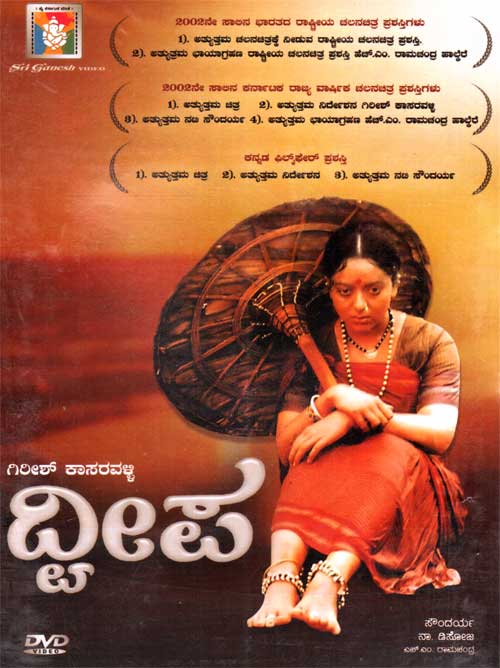
young widow befriends a boy at a Brahmin Vedic school and how both of them fall victims of the patriarchal and elitist system in deceptive ways. Ghatashraddha became the flagship of Girish Kasaravalli’s exploration into the slippery and complex domain of society-individual duality and legitimization of orthodox and authoritarian principles through socio-political force feeding. The movie also introduced a master filmmaker who has deep knowledge and insight in using available space, handling characters and transforming a plot’s cinematic possibility with maximum yield.
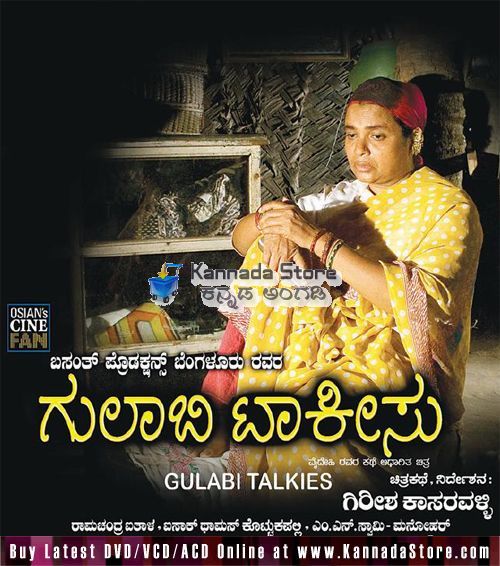
His second feature Tabarana Kathe (Tabara’s Tale, 1987) again put individuals and their existential dilemma against an omniscient and devouring socio-political system. The movie progresses through Tabara Shetty, a government watchman who is mercilessly neglected by his higher authorities after retirement. The narrative follows his efforts to get a much-deserved pension and shows how mere mortals are ending up after a life cycle of servicing and struggling under a hierarchical framework of power. Thaayi Saheba (Mother Saheba, 1997), which is considered as Kasaravalli’s masterpiece by many critics, epitomizes his search for justice, humanity and the salvation from power structures. Set in pre-independence India, Thaayi Saheba portrays the innards of a family of a Gandhian freedom fighter, who keeps ignoring his wife; while they develop a strong bond with her adopted son, and the son falling for his step sister. Kasaravalli treats the family as a closed system and analyzing it in the backdrop of the other metanarrative, history.
Sudhir Mishra; Eleven Shades Of Desire
With Dweepa (The Island, 2003), Kasaravalli expanded his quest for justice, freedom, and humanity from the alleys of institutions into nature and its wild expanses. Dweepa deals with the struggle for survival of some indigenous souls, who is trapped on a submerging island in the middle of a newly constructed reservoir. Kasaravalli’s master strokes shed lights on the contradictory stances of justice and law, using the island as a very powerful metaphor. The perpetual resistance of the priest’s family, which consists of the priest, his son, daughter-in-law, and a young relative, against a system imposing law with blind spots of justice, transcends regional barriers and attains a universal appeal by the end of the movie. Set in a fishing village of coastal Karnataka, Kasaravalli’s 2008 movie, Gulabi Talkies is a subtle but razor-sharp depiction of gender and religious identities and their contradictions. Using a dish antenna as a metaphor, Kasaravalli knits the life and struggle of Gulabi, an abandoned middle-aged woman and the hardcore movie buff in the village. With Gulabi Talkies, Kasaravalli’s projectile took a turn and his visual language became more politically resonant. Other noted works of Girish Kasaravalli are Mane (House, 1990), Kraurya (The Tale of a Storyteller, 1996), Hasina (2004), Kanasemba Kudureyaneri (Riding a Stallion of a Dream, 2010), and Koormavatara (2011).
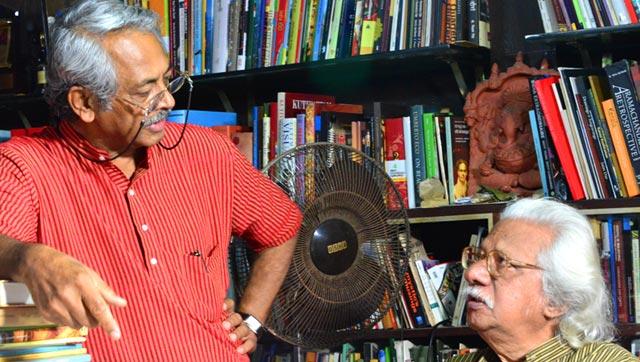
Born into a family with rich reading tradition, Kasaravalli is a voracious reader and his movies always keep a give and take relationship with the Kannada literature. Kasaravalli is the man of adaptations and most his adaptations are the best examples of how an aesthetic temperament hidden in one art form can be transferred and transformed into another art form without any transmission loss. His movies establish their own identity as independent works of art and at the same time, pay tributes and even complement the original literary works they are adapted from. As an auteur, Kasaravalli belongs to the pantheon of Ozu and Bresson with his minimalist and subtle portrayal of socio-political realities, using a group of carefully sketched characters. Kasaravalli’s unique touch reveals itself whenever he pauses somewhere in the middle of the cinematic flow of time as if to take a breath or emphasis on something, which elevates his visuals from their concrete existence and transforms them into organic entities. His camera movements and editing technique is classical in nature and attribute a contemplative pace to the movies, which enables the viewers to look into the characters inner world and dilemmas closely.
John Abraham, Portrait Of A Lucid Messiah
Girish Kasaravalli’s movies are often shouldered by the women protagonists, who show their defiant and pragmatic self whenever the narrative is at a crisis point and the male characters are on the verge of giving up. Most of his central characters are either alienated or deprived of their natural existence and they stand up in time to claim their space through a subtle but intense struggle. They are shown in wide angle shots, emphasizing their organic connection with nature and most of the emotions are conveyed through a glance, a shrug or a slight movement. Girish Kasaravalli belongs to that rare group of filmmakers who can create a multi-layered narrative using simplistic and minimal techniques of realism. Hence, getting into a Girish Kasaravalli movie is like being abandoned on an island of alienation, where the viewers are siphoned into a slippery and submerging land, which is very feminine and defiant. Those viewers who can identify and internalize his metaphors, which are distributed poignantly throughout the movie, will be transported to salvation along with the characters. These isles of feminine alienation make Girish Kasaravalli one of the finest auteurs India has ever produced.
Written By: Ragesh Dipu

